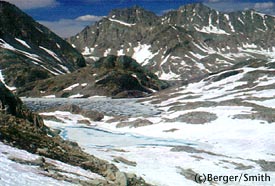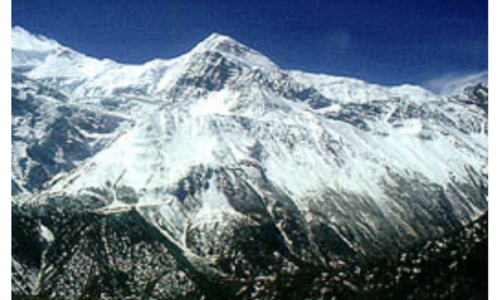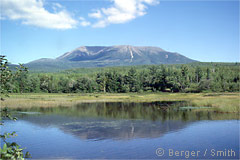The “Triple Crown.” Just saying it inspires thoughts of grandeur. For horse folks, of course, it’s three great races. For hikers, three great trails: The Appalachian , the Pacific Crest, and the Continental Divide: the first three trails to be entered into what is now America’s national scenic trails system.
And what a system it is!
The national scenic trails are designated by the United States Congress because of their outstanding scenic beauty and recreational opportunities. There are currently 11 long trails in the system (three were added to the system in 2009). The Appalachian, Pacific Crest, and Continental Divide trails are the oldest and best established, and the most popular with long-distance backpackers trying to complete a whole long trail. Together, these three trails have come to be known as “the Triple Crown.”
To thru-hike any of the three “Triple Crown” trails in a single season takes an average long-distance backpacker approximately 5 to 5 1/2 months. Additionally, many hikers attempt to hike one or more of these trails over several years, hiking a few weeks at a time and stringing the completed sections together like pearls on a string.
In total, as of 2011, fewer than 100 people have been awarded the Triple Crown Award, given out by ALDHA-West (the American Long Distance Hiking Association, Western States) to hikers who report completing all three hiking trails, either as single-season through-hikes or multiple-year section hikes.
Each of the thee trails runs a north-south direction through one of the U.S.’s main mountain ranges (or, in the case of the Pacific Crest Trail, through a series of consecutive mountain ranges). But beyond being mountain trails, the three are as different as siblings. Thinking about tackling one? Here is a preliminary overview to help you get started in making a choice. Search this site for more articles on the three trails.
The Appalachian National Scenic Trail
The Appalachian Trail (A.T.) is the oldest and best known of the three trails. The A.T. runs through 14 eastern states, beginning atop Springer mountain in northwest Georgia, and continuing northeast through North Carolina, Tennessee, Virginia, West Virginia, Maryland, Pennsylvania, New Jersey, New York, Connecticut, Massachusetts, Vermont, New Hampshire, and finally to Mt. Katahdin, the highest peak in Maine.
Thru-hiking the Appalachian Trail has been an iconic backpacking goal for decades. The number of people reporting having hiked the entire trail is has passed the 10,000 mark, in part because of the trail’s location in the populated East, and in part because guidebooks and maps of the Appalachian Trail are good and thorough; there are trailside shelters to sleep in, and there is even a thru-hiker culture complete with festivals and traditions. The A.T. receives plenty of publicity. After Bill Bryson’s best-selling A Walk in the Woods was published in 1998, interest in backpacking the A.T. exploded. The 2015 movie is expected to have an even greater effect.
The Appalachian Trail is currently just under 2,200 miles long (mileage of all three trails changes annually due to relocations, trail work, trail damage from floods and fires, and land purchase decisions). It is sometimes called the “long green tunnel,” because mountains in the East rarely rise above treeline. Nonetheless, despite much lower elevations than the western trails, the A.T. boasts some of the most rugged and difficult straight-up-the-mountain-and-straight-back-down-again hiking of any of the three.
The Pacific Crest National Scenic Trail
The Pacific Crest Trail begins about 50 miles east of San Diego, near the hamlet of Campo at the Mexican border. It runs the entire length of California (about 1,600 trail miles), as well as Oregon and Washington, for a grand total of 2,650 miles.
Much of the route goes through National Forests and National Parks, with large tracts of wilderness, including the famous Ansel Adams and John Muir Wildernesses, as well as Yosemite, Sequoia, and King’s Canyon National Parks. The P.C.T. is marked in its entirety, though not as assiduously as the Appalachian Trail. Difficulties for long distance hikers include early season snow, desert hiking (hot and waterless) in southern California, and a lack of some of the trail amenities enjoyed by Appalachian Trail hikers.
The Continental Divide National Scenic Trail
The “wild child” of the three trails is the Continental Divide, the last of the three to be designated, the longest, and the least complete. The Continental Divide splits America’s watersheds, sending eastern slope waters to the Atlantic Ocean and western slope waters to the Pacific. C.D.T. managers hope to situate the trail as close to the actual Continental Divide as is safe and practicable; however, the ruggedness of the topography and the difficulty of working with private landowners frequently dictate that the trail parallels the Divide on one side or the other.
The C.D.T. traverses New Mexico, Colorado, Wyoming, Idaho, and Montana, passing through a patchwork of National Forests, National Parks, and Bureau of Land Management lands, as well as Indian reservations and private lands. Some of the highlights include the Colorado section, which averages about 11,000 feet in elevation and at times stays astride the Continental Divide for days at a time, and a section of hiking Rocky Mountain National Park trails.. Wyoming’s Wind River Range and Yellowstone National Park, and Glacier National Park in Montana are three other C.D.T highlights.
In some sections, particularly in New Mexico, the trail’s route has not been officially approved, let alone marked or mapped. So in addition to rugged mountain terrain and weather, and in addition to trying to squeeze some 3,000 miles of hiking into the all-too-short snow-free months of summer and shoulder season, hikers must contend with navigational challenges and hiking cross country.
The three trails are all completely different. What they share is a mammoth challenge, and some of the finest mountain scenery and hiking experiences to be found anywhere.





